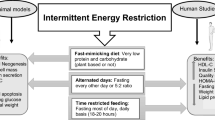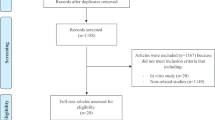Abstract
l-Leucine has been used to improve metabolic outcomes in glucose-intolerant rodent models. However, because studies have used different experimental models and conditions it is difficult to establish the best approach for new clinical trials evaluating the potential effects of l-leucine on glucose homeostasis. We performed a systematic review to report the effect of l-leucine supplementation on glucose homeostasis in rodents with glucose intolerance. The search engines MEDLINE and ScienceDirect were applied using MeSH terms. Thirty-four studies were included in this systematic review. Based on the current data, ingestion of 90–140 mg day−1 of isolated l-leucine in diet-induced obesity (DIO) models shows improvement in metabolic markers if offered during the development of the metabolic disorder in almost all the studies, but not after. Branched-chain amino acid supplementation was effective in streptozotocin-induced β-cells death but not in DIO models. l-Leucine supplementation seems to have an optimal dose and timing for supplementation to improve glucose homeostasis in DIO.


Similar content being viewed by others
References
Abdulla H, Smith K, Atherton PJ, Idris I (2016) Role of insulin in the regulation of human skeletal muscle protein synthesis and breakdown: a systematic review and meta-analysis. Diabetologia 59:44–55
Ajarem J et al (2015) Neurochemical, structural and neurobehavioral evidence of neuronal protection by whey proteins in diabetic albino mice. Behav Brain Funct 11:1–8
Alberti KGMM, Zimmet P (2013) Global burden of disease—where does diabetes mellitus fit in? Nat Rev Endocrinol 9:258–260
Baum JI et al (2016) Leucine supplementation at the onset of high-fat feeding does not prevent weight gain or improve glycemic regulation in male Sprague-Dawley rats. J Physiol Biochem 72:781–789
Betik AC, Aguila J, Mcconell GK, Mcainch AJ (2016) Tocotrienols and whey protein isolates substantially increase exercise endurance capacity in diet-induced obese male sprague-dawley rats. PLos One 11:1–17
Binder E et al (2013) Leucine supplementation protects from insulin resistance by regulating adiposity levels. PLoS One 8:74705–74717
Bong HY et al (2010) Effects of corn gluten hydrolyzates, branched chain amino acids, and leucine on body weight reduction in obese rats induced by a high fat diet. Nutr Res Pract 4:106–113
Chen H, Simar D, Ting JHY, Erkelens JRS, Morris MJ (2012) Leucine improves glucose and lipid status in offspring from obese dams, dependent on diet type, but not caloric intake. Neuroendocrinology 1:1356–1364
Chen C, Yu X, Shao S (2015) Effects of omega-3 fatty acid supplementation on glucose control and lipid levels in type 2 diabetes: a meta-analysis. PLoS One 10:1–14
Elie M et al (2014) Leucine supplementation modulates fuel substrates utilization and glucose metabolism in previously obese mice. Obesity 22:713–720
Eller LK, Saha DC, Shearer J, Reimer RA (2013) Dietary leucine improves whole-body insulin sensitivity independent of body fat in diet-induced obese Sprague–Dawley rats. J Nutr Biochem 24:1285–1294
Etxeberriaa U, Garzaa AL, Martínez JL, Milagro FI (2015) Biocompounds attenuating the development of obesity and insulin resistance produced by a high-fat sucrose diet. Nat Prod Commun 10:1417–1420
Floegel A et al (2013) Identification of serum metabolites associated with risk of type 2 diabetes using a targeted metabolomic approach. Diabetes 62:639–648
Freudenberg A, Petzke KJ, Klaus S (2012) Comparison of high-protein diets and leucine supplementation in the prevention of metabolic syndrome and related disorders in mice. J Nutr Biochem 23:1524–1530
Freudenberg A, Petzke KJ, Klaus S (2013) Dietary l-leucine and l-alanine supplementation have similar acute effects in the prevention of high-fat diet-induced obesity. Amino Acids 44:519–528
Frick G Peter, Goodman H Maurice (1989) Insulin regulation of the activity and phosphorylation of branched-chain 2-oxo acid dehydrogenase in adipose tissue. Biochem J 258:229–235
Fu L, Li F, Bruckbauer A, Cao Q, Cui X, Wu R, Shi H, Xue B, Zemel MB (2015) Interaction between leucine and phosphodiesterase 5 inhibition in modulating insulin sensitivity and lipid metabolism. Diabetes Metab Syndr Obes 6(8):227–239
Hamad EM, Taha SH, Dawood AIA, Sitohy MZ, Abdel-hamid M (2011) Protective effect of whey proteins against nonalcoholic fatty liver in rats. Lipids Health Dis 10:57
Hutton JC, Malaisse WJ (1980) Interaction of branched chain amino acids and keto acids upon pancreatic islet metabolism and insulin secretion. J Biol Chem 255:7340–7346
Irving BA et al (2015) Effect of insulin sensitizer therapy on amino acids and their metabolites. Metabolism 64:720–728
Kavadi PK et al (2017) Dietary incorporation of whey protein isolate and galactooligosaccharides exhibits improvement in glucose homeostasis and insulin resistance in high fat diet fed mice. J Intercult Ethnopharmacol 6:326–332
Khamzina L et al (2005) Increased activation of the mammalian target of rapamycin pathway in liver and skeletal muscle of obese rats: possible involvement in obesity-linked insulin resistance. Endocrinology 146:1473–1481
Lee C et al (2016) Branched-chain amino acids and insulin metabolism: the insulin resistance atherosclerosis Study (IRAS). Diabetes Care 39:582–588
Li H, Xu M, Lee J, He C, Xie Z (2012) Leucine supplementation increases SIRT1 expression and prevents mitochondrial dysfunction and metabolic disorders in high-fat diet-induced obese mice. Am J Physiol Endocrinol Metab 303:1234–1244
Li X et al (2013a) Chronic leucine supplementation increases body weight and insulin sensitivity in rats on high-fat diet likely by promoting insulin signaling in insulin-target tissues. Mol Nutr Food Res 57:1067–1079
Li T et al (2013b) Branched-chain amino acids alleviate nonalcoholic steatohepatitis in rats. Appl Physiol Nutr Metab 38:836–843
Li H et al (2016) Leucine supplementation increases SIRT1 expression and prevents mitochondrial dysfunction and metabolic disorders in high-fat diet-induced obese mice. Am J Physiol Endocrinol Metab 15(303):1234–1244
Liu R, Li H, Fan W, Jin Q, Chao T, Wu Y, Huang J, Yang X (2017) Leucine supplementation differently modulates branched-chain amino acid catabolism, mitochondrial function and metabolic profiles at the different stage of insulin resistance in rats on high-fat diet. Nutrients 9:565–585
Lotta L et al (2016) Genetic predisposition to an impaired metabolism of the branched-chain amino acids and risk of type 2 diabetes: a mendelian randomisation analysis. PLoS Med 13(11):e1002179
Lu M, Zhang X, Zheng D, Jiang X, Chen Q (2015) Branched-chain amino acids supplementation protects streptozotocin-induced insulin secretion and the correlated mechanism. BioFactor 41(2):127–133. https://doi.org/10.1002/biof.1188
Macdonald PE et al (2002) The multiple actions of GLP-1 on the process of glucose-stimulated insulin secretion. Diabetes 51:434–442
Macotela Y et al (2011) Dietary Leucine—an environmental modifier of insulin resistance acting on multiple levels of metabolism. PLoS One 6:21187–21200
Mcallan L et al (2014) Protein quality and the protein to carbohydrate ratio within a high fat diet influences energy balance and the gut microbiota in C57BL/6J mice. PLos One 9:88904–88917
Mi N et al (2015) Branched-chain amino acids attenuate early kidney injury in diabetic rats. Biochem Biophys Res Comm 466:240–246
Mietlicki-baase EG et al (2017) Daily supplementation of dietary protein improves the metabolic effects of GLP-1-based pharmacotherapy in lean and obese rats. Physiol Behav 177:122–128
Nairizi A, She P, Vary TC, Lynch CJ (2009) Leucine supplementation of drinking water does not alter susceptibility to diet-induced obesity in mice. J Nutr 139:715–719
Newgard CB et al (2009) A branched-chain amino acid-related metabolic signature that differentiates obese and lean humans and contributes to insulin resistance. Cell Metab 9(4):311–326. https://doi.org/10.1016/j.cmet.2009.02.002
Pezeshki A, Fahim A, Chelikani PK (2015) Dietary whey and casein differentially affect energy balance, gut hormones, glucose metabolism, and taste preference in diet-induced obese rats. J Nutr 145:2236–2244
Platt KM, Charnigo RJ, Shertzer HG, Pearson KJ (2016) Branched-chain amino acid supplementation in combination with voluntary running improves body composition in female C57BL/6 mice. J Diet Suppl 13:473–486
Sadri H, Larki NN, Kolahian S (2017) Hypoglycemic and hypolipidemic effects of leucine, zinc, and chromium, alone and in combination, in rats with type 2 diabetes. Biol Trace Elem Res 180:246–254
Shertzer HG, Woods SE, Krishan M, Genter MB, Pearson KJ (2011) Dietary whey protein lowers the risk for metabolic disease in mice fed a high-fat diet. J Nutr 1:582–587
Storlien L, Oakes ND, Kelley DE (2004) Metabolic flexibility. Proc Nutr Soc 63:363–368
Takano A et al (2001) Mammalian target of rapamycin pathway regulates insulin signaling via subcellular redistribution of insulin receptor substrate 1 and integrates nutritional signals and metabolic signals of insulin. Mol Cell Biol 21:5050–5062
Tobias DK, Mora S, Verma S, Lawler PR (2018) Altered branched chain amino acid metabolism: toward a unifying cardiometabolic hypothesis. Curr Opin Cardiol 33(5):558–564. https://doi.org/10.1097/HCO.0000000000000552
Tong X et al (2014) Effects of whey protein and leucine supplementation on insulin resistance in non-obese insulin-resistant model rats. Nutrition 30:1076–1080
Torres-leal FL et al (2011) Leucine supplementation improves adiponectin and total cholesterol concentrations despite the lack of changes in adiposity or glucose homeostasis in rats previously exposed to a high-fat diet. Nutr Metab (Lond) 8:62
Tranberg B et al (2013) Whey protein reduces early life weight gain in mice fed a high-fat diet. PLos One 8:1–7
Tremblay F, Marette A (2001) Amino acids and insulin signaling via the mTOR/p70 S6 kinase pathway. J Biochem Chem 276(41):38052–38060
Wang T (2011) Metabolite profiles and the risk of developing diabetes thomas. Nat Med 17:448–453
Xu G et al (2015) Intestinal mTOR regulates GLP-1 production in mouse L cells. Diabetologia 58:1887–1897
Yao K et al (2016) Leucine in obesity: therapeutic prospects. Trends Pharmacol Sci 37:714–727
Zanchi NE et al (2012) Dose and latency effects of leucine supplementation in modulating glucose homeostasis: opposite effects in healthy and glucocorticoid-induced insulin-resistance states. Nutrients 4:1851–1867
Zhang Y et al (2007) Increasing dietary leucine intake reduces diet-induced obesity and improves glucose and cholesterol metabolism in mice via multimechanisms. Diabetes 56:1647–1654
Zhang F et al (2016) Branched chain amino acids cause liver injury in obese/diabetic mice by promoting adipocyte lipolysis and inhibiting hepatic autophagy. EBioMedicine 13:157–167
Zhao X et al (2016) The relationship between branched-chain amino acid related metabolomic signature and insulin resistance: a systematic review. J Diabetes Res 1–12
Zskudelski T (2001) The mechanism of alloxan and streptozotocin action in B cells of the rat pancreas. Physiol Res 50:536–546
Funding
This research did not receive any specific grant from funding agencies in public, commercial or not-for-profit sectors. The corresponding author is funded by the National Council for Scientific and Technological Development (CNPq) and is a CNPq Research Productivity Fellow. The first and the second authors received Ph.D. scholarships from the Coordination for the Improvement of Higher Education Personnel (CAPES).
Author information
Authors and Affiliations
Corresponding author
Ethics declarations
Conflict of interest
The authors declare that they have no conflict of interest.
Ethical approval
This article does not contain any experimental procedure with human participants or animals performed by any of the authors.
Additional information
Handling Editor: R. C. Waterman.
Electronic supplementary material
Below is the link to the electronic supplementary material.
Rights and permissions
About this article
Cite this article
Brunetta, H.S., de Camargo, C.Q. & Nunes, E.A. Does l-leucine supplementation cause any effect on glucose homeostasis in rodent models of glucose intolerance? A systematic review. Amino Acids 50, 1663–1678 (2018). https://doi.org/10.1007/s00726-018-2658-8
Received:
Accepted:
Published:
Issue Date:
DOI: https://doi.org/10.1007/s00726-018-2658-8




